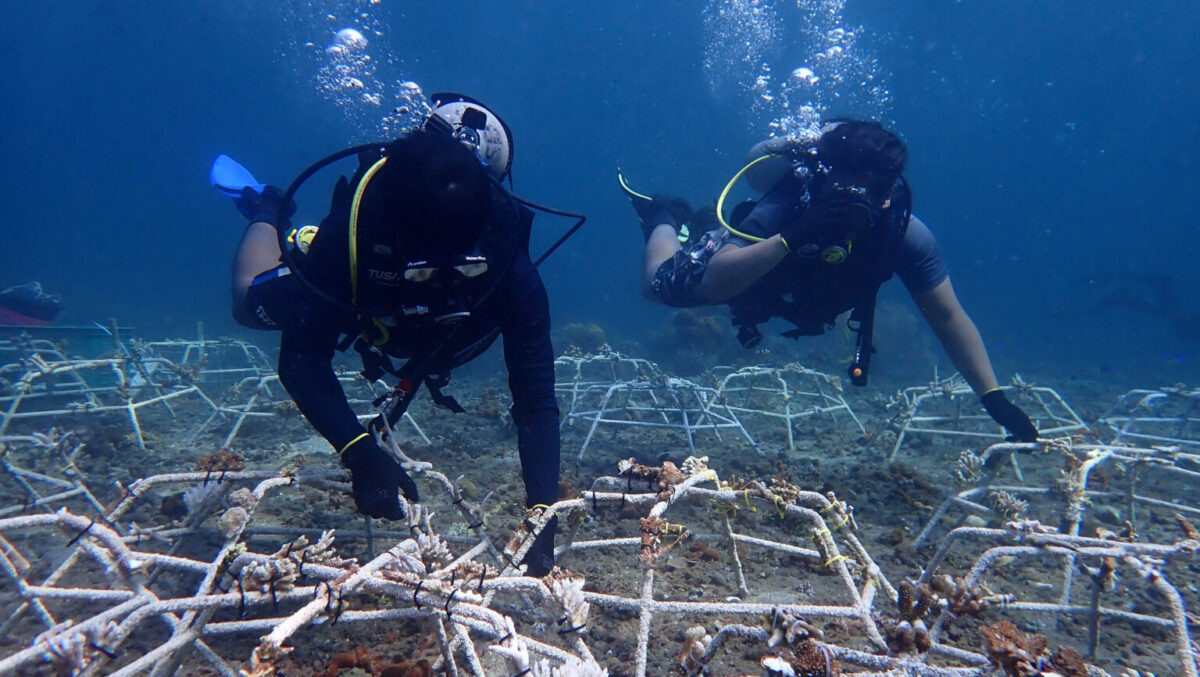From Rubble to Cyborg Reef

Four decades ago, fishermen in the southern regions of Sulawesi Island, Indonesia, employed a destructive fishing method: blasting the reefs with dynamite to stun fish and easily collect them. This practice severely damaged the vibrant coral ecosystems, leaving behind rubble where new coral larvae struggled to take root.
Despite such drastic devastation, these reefs are experiencing a revival, thanks to the collaborative efforts of local residents, Indonesian and British scientists, and the introduction of an innovative device known as the “Reef Stars.” These structures, resembling six-legged spiders the size of coffee tables, have played a pivotal role in the reef’s recovery, showing results so promising that new research indicates these rehabilitated areas closely resemble their healthy neighboring reefs.
The interconnected metal stars create a steel and coral lattice that covers significant areas, effectively forming a hybrid, cyborg-like reef. Recent research indicates that these hybrid reefs show promising signs of recovery, resembling healthy reefs in various key indicators.
The findings, published in March in Current Biology, showed that reefs replanted just four years prior exhibited similar levels of carbonate exoskeleton production as natural reefs, and the coral cover increased from 17% to over 50%—comparable to healthy reefs.
The reliance on specific, fast-growing coral types preferred by restorationists has been a weakness in places like Florida, where a recent underwater heatwave decimated many transplanted corals. Fortunately, the Indonesian approach benefits from greater genetic diversity among the corals used and more favorable ocean conditions. While other global reefs have suffered from this problem, the corals in Indonesian waters have remained comparatively healthy.